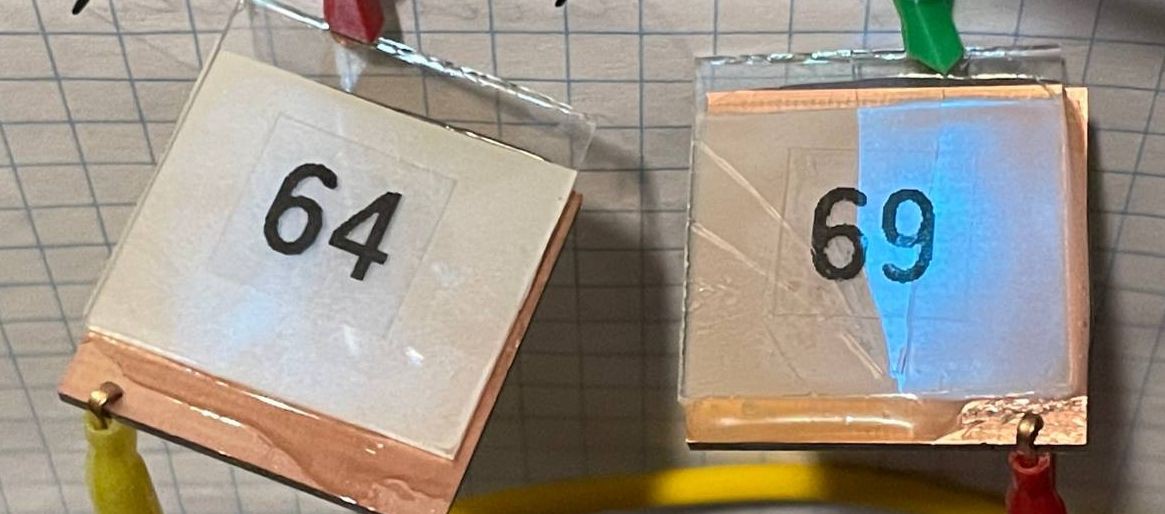
Winners of the fourth experiment.
In this experiment, I decided to grind the phosphor layer into the plane, and then immediately glued the back electrode without applying an additional dielectric layer. And lo and behold - samples No. 62 (EL-455 + EP-2146) and No. 68 (EL + 455 + Boxepox) really glow much brighter than samples No. 29 or No. 44, respectively, having the same composition, but at 3-4 times the thicker of the package:

The composition of the samples is the same (EL-455 + EP-2146), but No. 29 has a thicker dielectric layer and was not polished
The thickness of the package here was 70 and 150 µm for No. 62 and No. 68, respectively - therefore No. 68, based on epoxy, boxepox glows weaker
But you can see that No. 62, based on EP-2146, is covered in stains, and on the basis of epoxy Boxepox glows very evenly.
By the way, thermo nozzles can also be used as a substance for gluing, although the brightness will be very poor. The main thing is to glue on an electric stove so that the thermo nozzles are really liquid. Somehow I'll have to try mixing barium titanate in them and see what happens ...

Samples glued with thermo-nozzles. The glass of No. 69 cracked during gluing, but this did not prevent it from starting at least halfway.
 Artem Kashkanov
Artem Kashkanov
Discussions
Become a Hackaday.io Member
Create an account to leave a comment. Already have an account? Log In.